Park Güell. A "Greek theater" in Barcelona!
I ascended Barcelona's Carmen hill to see how an inhospitable and uninhabited scenery was transformed into a fairy-tale oasis, through the exemplary cooperation of architecture and nature.
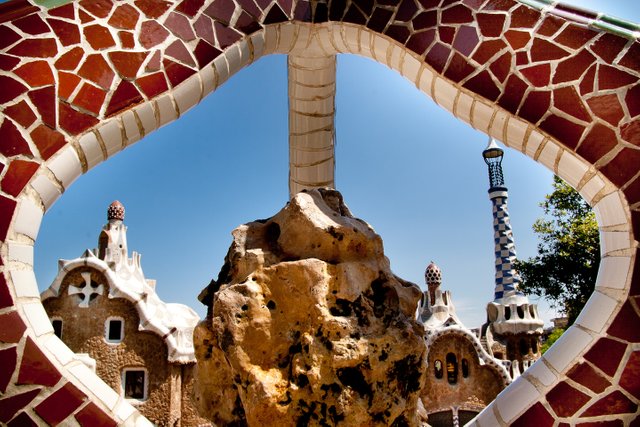
Park Güell, one of the largest parks in Barcelona today, started out as an ambitious residential project, a garden city. On a barren and steep hillside in northwest Barcelona, Antoni Gaudí i Cornet, with the funding and support of Eusebi Güell, tried to create a 50 acres heavenly suburb and a self-contained community of 60 homes to be sold to demanding and, naturally, wealthy people. The topography of the hill and the triangular properties that he designed, made it possible for all the houses to have unlimited view while the perimeter wall secured the complex.
Commercially it was a total failure! Only two houses were built while the rising Barcelona urban class didn't show the slightest interest in investing to the new remote suburb. In 1918, Güell died and Gaudí moved to the construction site of Sagrada Família, practically depriving the project of residents. In 1922 the complex was bought by the municipality of Barcelona, and in 1994 the park was placed under the protection of UNESCO as a monument of world cultural heritage. An ex-post recognition of a work that, although it was accomplished a century ago, could and should be a model for nowadays.
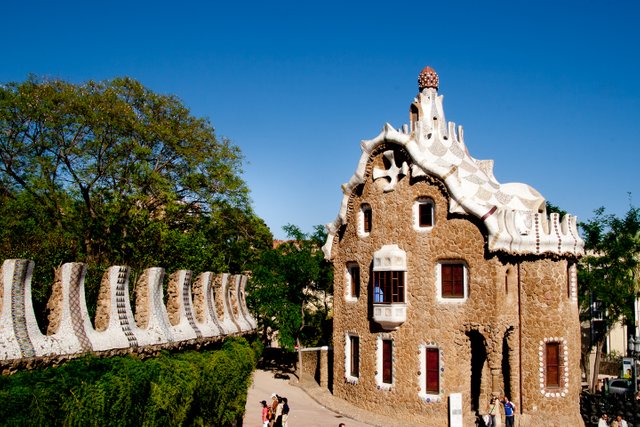
In spite of the commercial failure, the landscape design of the property was completed, turning the arid, barren land into a dense pine forest with beautiful alleys surrounded by palm trees, highlighting Gaudi's genius to convert usable constructions into works of art. Park Güell makes you feel that you are moving into a gigantic sculpture. Arriving at Olot Street, you can see a curvy wall that follows harmonically the natural surroundings, blazing in the sunlight, while the main entrance introduces you to a fairytale world. The entrance of the park is between two constructions that your logic refuses to accept as buildings, but that is precisely what they are. I am talking about two stone built elliptical kiosks that look like enormous mushrooms!
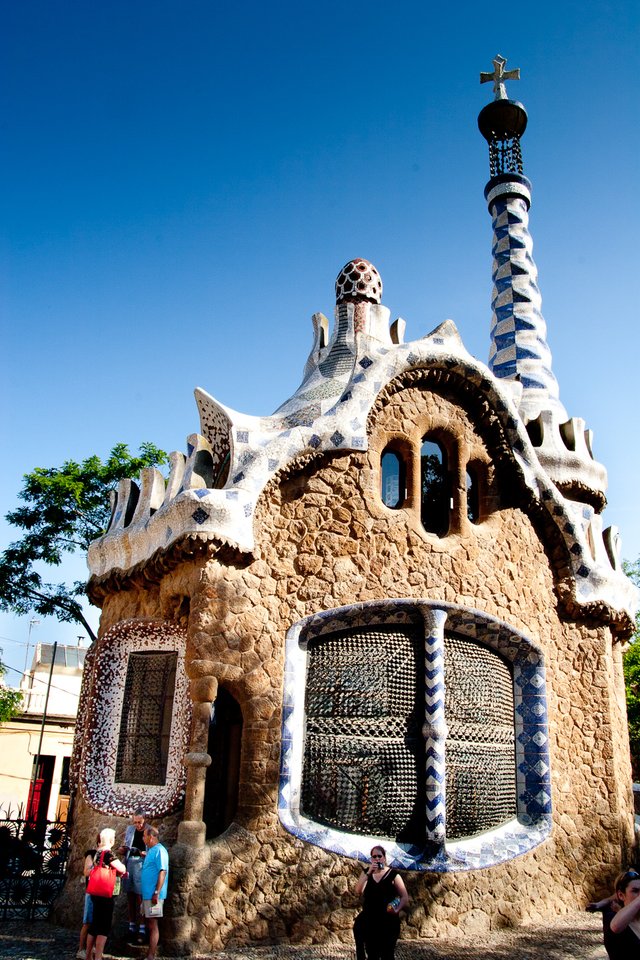
The first impression is that the landscape has been forced to fit the needs of the architect and that a lot of sophisticated and expensive materials have been used to produce this result but the truth is exactly the opposite! Gaudi uses simple, everyday materials and colors, combining traditional building techniques and prefabricated elements made by the Güell cement company. Trencadís, the broken ceramics that become an art form, was a very clever way to protect low-grade materials from rain-erosion, with useless scraps provided by the town's ceramics workshops. His design, totally followed the demands of the landscape, with elevated roads, bridges and passages dug into the rock, to let you move easily around the steep slope, in a satisfying and fulfilling way. Starting his career at a time that the demand for aesthetic upgrade of the daily life and for narrowing down the gap between art and applied arts was becoming more and more persistent, Gaudí gave, with this work, the clever proof that this idea is not only correct but also workable. It is a pity that such a remarkable plan failed because we would have been able to see today a model settlement, innovative even with modern criteria.
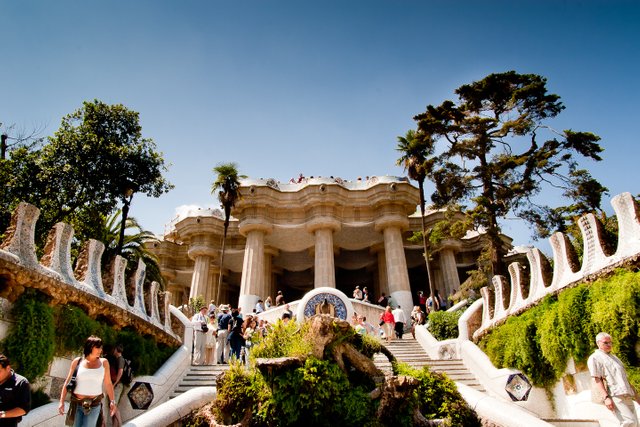
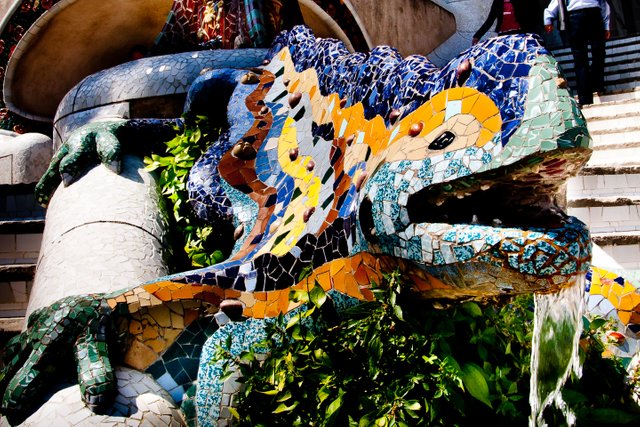
Having left behind the "mushroom houses" I saw the magnificence of the main staircase that looks like the entrance of a palace. Separated in two levels, it hugs one large fountain in each one. At the first one there are plaques, coral patterns and strange forms that you can observe for hours without understanding what you see, while the second one is characterized by the presence of a huge salamander with shiny ceramic scales, a popular spot for taking pictures! The landing between them is dominated by the shield of Catalonia! The last step leads to a very well designed bench, placed in a position with plenty sunlight in the winter and shadow in the summer!
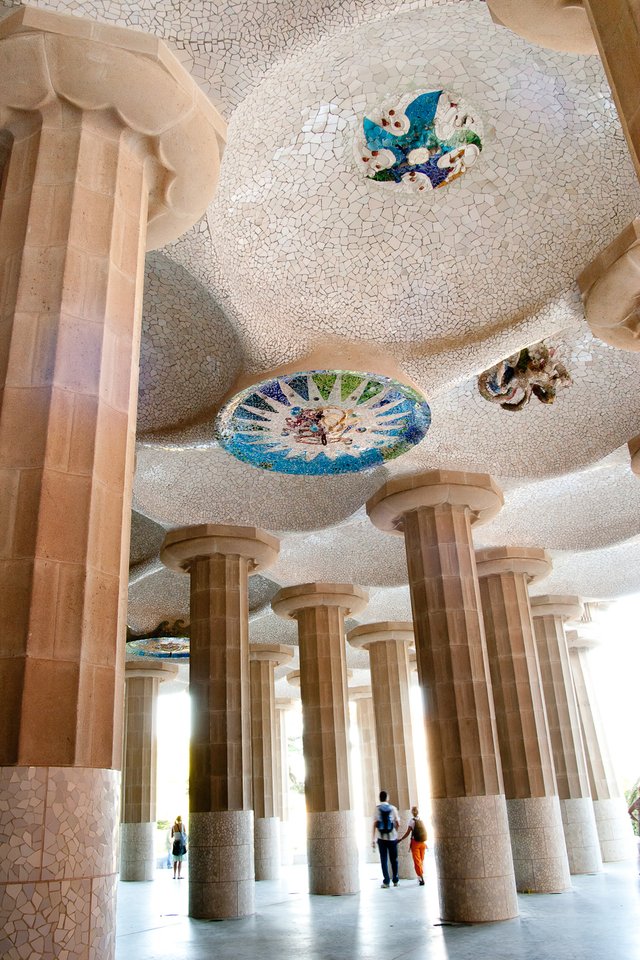
The next thing I saw was the place that was originally designed as the community market but it is known as the temple. It is a work that arouse a lot of discussion. We do not know if it was meant to be a revival of ancient Greek architecture and a tribute to the ancient Greeks or a mockery of Doric order and a satire against ancient Greek art. The sure thing is that it is an amazing project. The leaning outer columns, designed to hold the enormous weight of the plaza above, look like they are about to penetrate the playful ceiling, transforming a simple walk into a wonderful madness. I was even more amazed when I found out that those columns apart from supporting an extremely heavy plaza and being a feast for the eyes have one more stunning use.
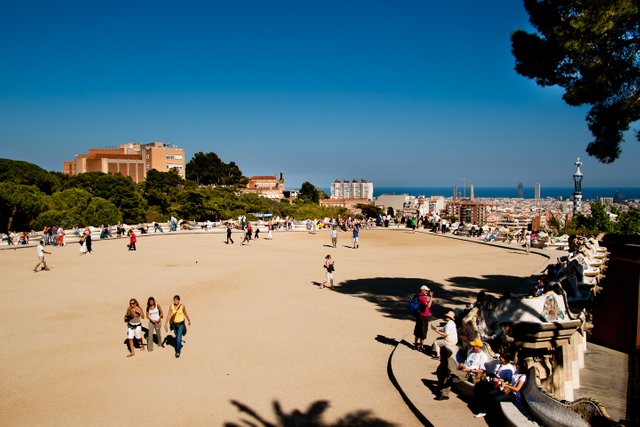
The ground of the plaza collects and filters the rainwater with a complex piping system and leads it through the columns in a twelve-thousand-liter cistern, offering to the settlement a relative autonomy in water resources. The square itself, being 86x40 meters, is the natural center of the complex. This "Greek theater", as Gaudí called it, can be compared to the scene of a giant amphitheater, while the houses of the settlement would have been the spectators area.
The whole plaza is surrounded by a curvy bench, hundreds of meters long. Despite its extraordinary size it is perfect for small groups but what really blow my mind away was how comfortable this concrete bench was! The broken ceramics that cover it, are the most impressive example of Trencadís and a trademark for Gaudi's work. It is obvious that Gaudy never made a design for each one of the thousands of ceramics used for this work but it is also obvious that he used in the best possible way the materials and the craftsmen available.
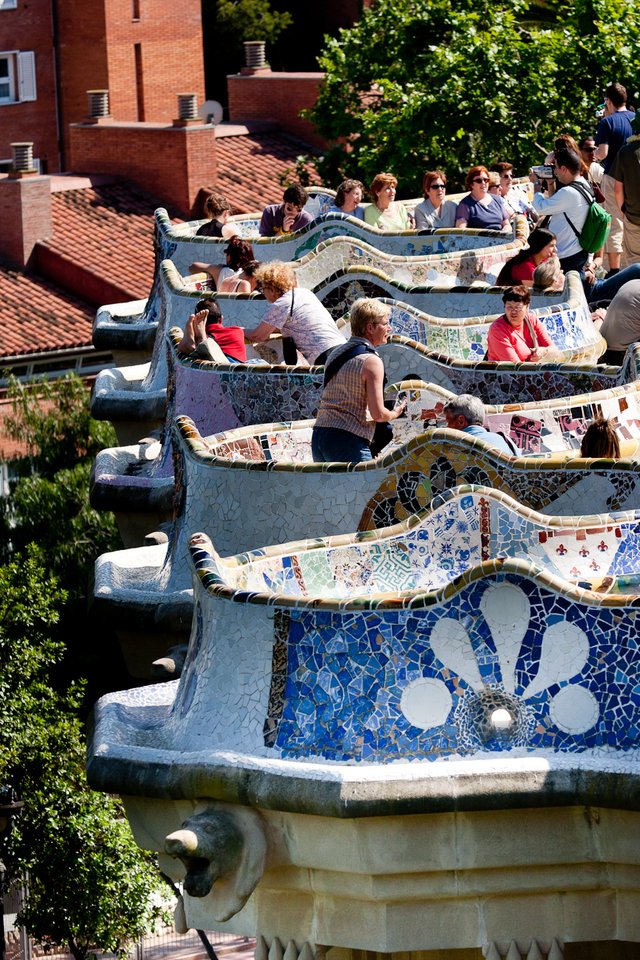
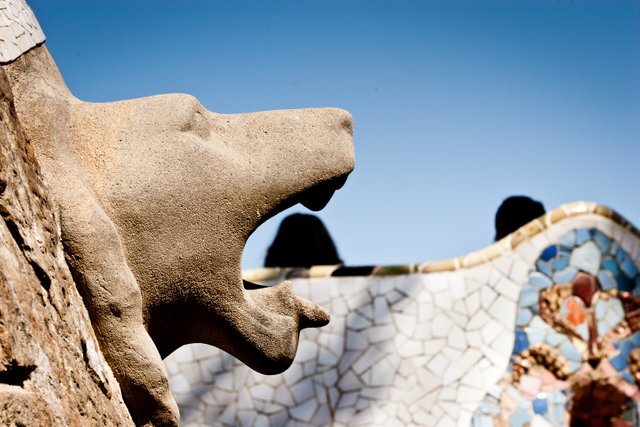
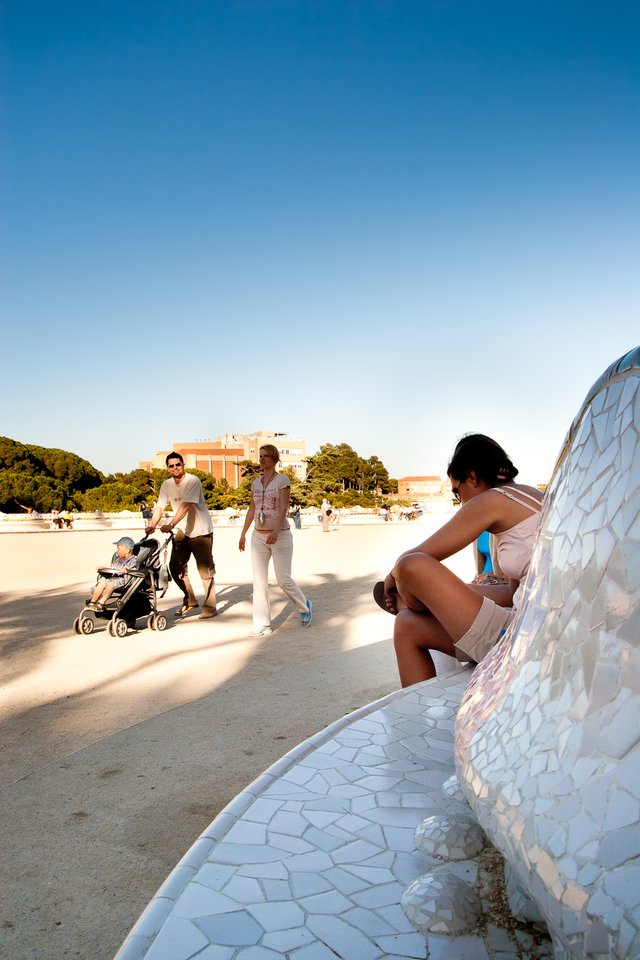
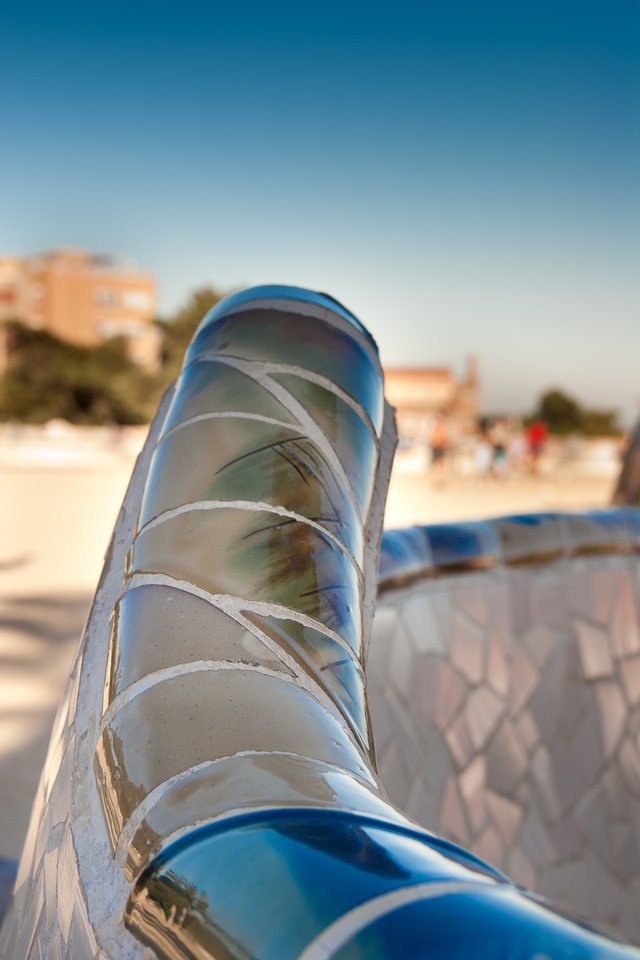
Overall, Gaudí's work is rich in symbolism while it's interpretation is quite difficult. Ambiguous or indefinable forms of animals, geometric instruments and drawings, alchemical symbols, depictions of the seasons and the moon cycle, even references to the ancient Delphi and Pythia, are just some of the stimuli that the visitors of the park receive. It is up to you to decide if you want to see fairy-tale forms, concealed symbols, or both. In every case, if you are in Barcelona, you must definitely spend a few hours in Park Güell. For a simple walk, for a coffee watching the world's biggest bench or for a picnic at the wooden tables you will find under the pine trees, it's an experience you will not regret.
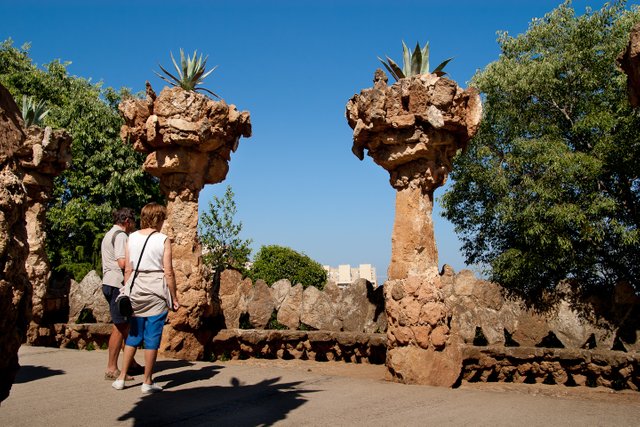
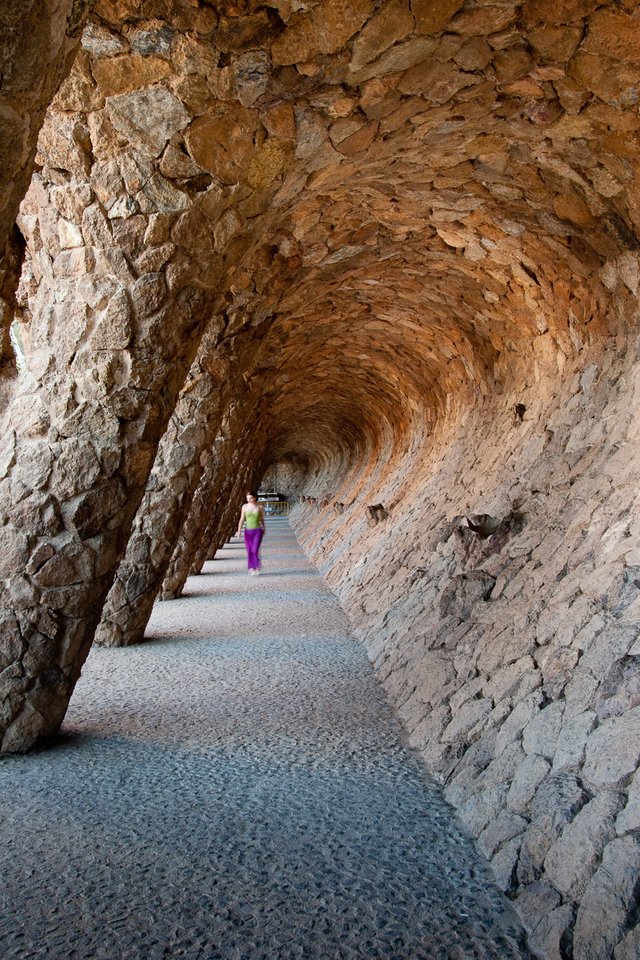
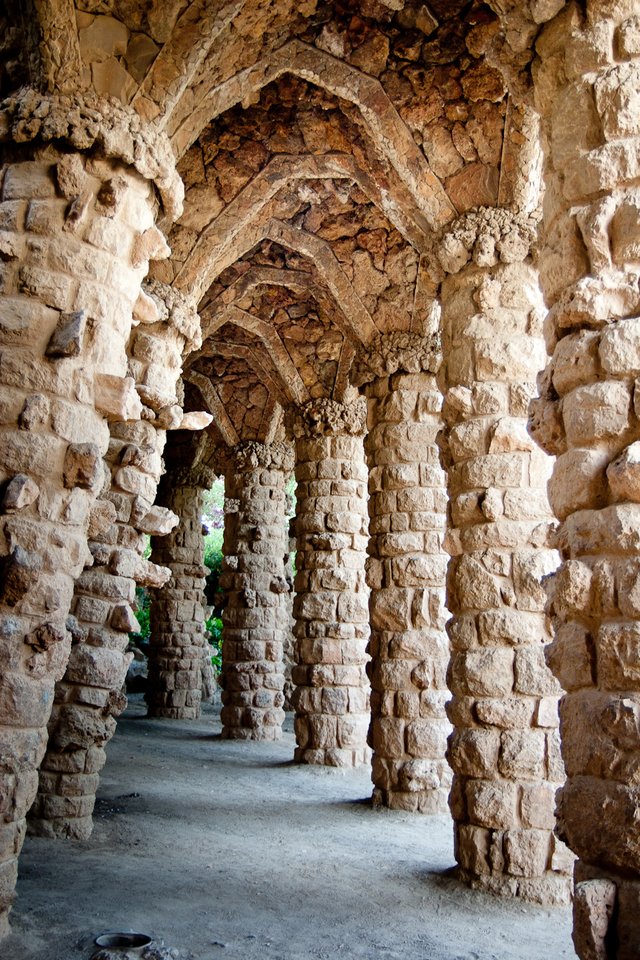
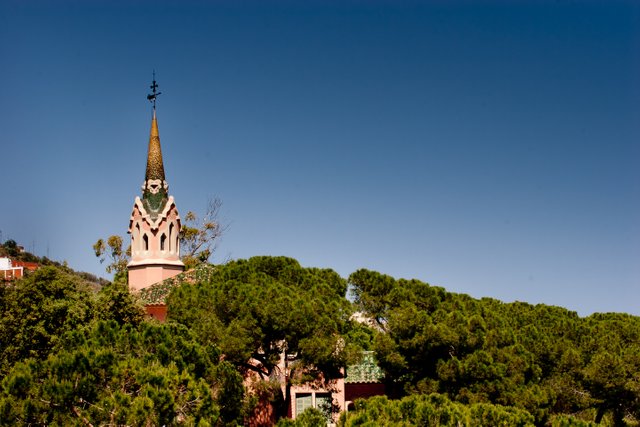
Thank you for reading and if you want to know more about me you can check out my introduction post.
Commenting, upvoting and resteeming are highly appreciated!
Wow!! This is an excellent article @fotostef
#bigwaves
Thank you very much for your support and your encouragement!
Congratulations! Your high quality travel content caught our attention and earned you a reward, in form of an upvote and resteem. Your work really stands out. Your article now has a chance to get curated and featured under the appropriate daily topic of our Travelfeed blog. Thank you for using #travelfeed
Learn more about our travel project on Steemit by clicking on the banner above and join our community on Discord
Thank you for your support, it is always more than welcome!
A few years ago I was also in this park. It 'really beautiful and interesting, visiting it you see all the genius of Gaudí.
Thanks for letting me remember this nice place!
I am really glad that you liked it. Thank you for stopping by!
Chic article. I learned a lot of new things. I signed up and voted. I will be glad to mutual subscription))))
Really beautiful stuff. I want to go!